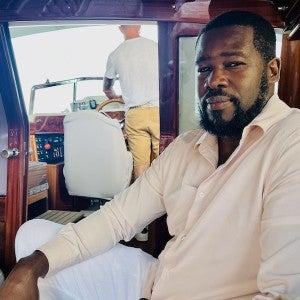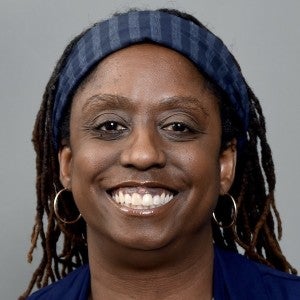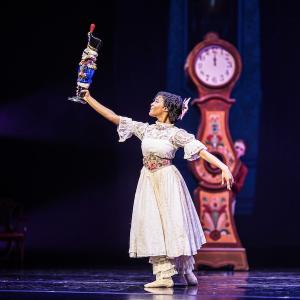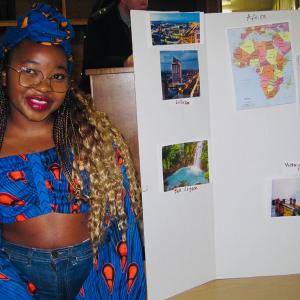Beyond optics: Making real change at Interlochen
A discussion with Dr. Aretina Hamilton, Interlochen Center for the Arts’ associate director of diversity, equity, and inclusion.
When we last spoke to Dr. Aretina Rochelle Hamilton, the world was a radically different place. In the few short months since then, a global pandemic has infected millions of people and ravaged the economy, and the murder of George Floyd has reignited the international conversation around police brutality and racial injustice.
To Dr. Hamilton, a cultural geographer whose expertise includes Black Geographies, Black Queer Cartographies, and Racialized Space and Trauma, it’s clear that these issues are intrinsically linked.
“I think that COVID-19 helped catapult these issues to the forefront. With COVID-19, we clearly see inequities: be it healthcare, economics, but also xenophobia and racism,” Dr. Hamilton said.
Interlochen Center for the Arts is not immune to these issues. Dr. Hamilton urges that we all dispel the belief that Interlochen is free from social problems.
“We know many of our students are coming not only from major cities, but are also from international destinations, and Black Lives Matter as a global movement is really impacting people,” Dr. Hamilton said. “There is a desire from not only our students, but also our donors and alumni, to address these issues.”
Because of that desire and her considerable expertise in the area, Dr. Hamilton was recently appointed as the inaugural Associate Director of Diversity, Equity, and Inclusion at Interlochen Center for the Arts. Building on her success within Human Resources, Dr. Hamilton is working to establish comprehensive diversity programming, with an aim of fostering a more inclusive, equitable, and diverse campus community.
We spoke to Dr. Hamilton about her vision for the institution and what we can all do to make our own lives more inclusive and equitable.
Over the course of your first two years at Interlochen, what are some positive changes that you’ve witnessed across campus?
I would say our recruitment. We are bringing in more people that have a different lens, and we’re also broadening our definitions of diversity. We’ve been really well equipped to deal with the issues of our LGBTQIA community, but when it came to racial and ethnic diversity—those are growing edges. We are now beginning to have an honest conversation around those needs.
Students come here to have a great arts education, and a wonderful complete education. We are cultivating full-bodied individuals. We are especially focused now on how Interlochen helps prepare our students not only for the arts world, but, as our motto states, to promote “world friendship through the universal language of the arts.” We want to be sure we prepare our students to be global thinkers who have real global friendships.
In addition to your role, you also teach several Arts Academy courses. How has that experience been for you so far?
The job of a diversity practitioner is not only coaching, mentoring, and holding special talks. It’s also about providing resources to faculty to diversify their courses.
Last year, I taught two courses: Introduction to African American Studies; and Black Women, Feminism, and Beyoncé. This year, I’m breaking down diversity and inclusion to the bare bones. I have a course this semester called The History of Race and Racism. I am taking a look at how race as a modern invention becomes a tool by which we categorize some people and we marginalize others. This is not a 2020 thing. It happened long before 2020—even before the 1960s, 1940s. We have to analyze the reality that the U.S.’s founding and development as a nation is intrinsically connected to the nation’s history of slavery and racism.
For me, I love teaching as a geographer. A lot of my work has focused on critical race theory, and looking at the racialization of space. This basically means that I look at how people use geography to codify boundaries. When we think of place, we also think of the certain types of people who live there. Teaching opens those boundaries, and it’s an amazing space where we can integrate more inclusion, not just on the academic side, but also on the arts side.
In my research, I’ve found so many amazing examples of how artistic institutions and conservatories are implementing courses. They’re bringing different perspectives into the classroom. A traditional arts curriculum places an extreme emphasis on the European Eurocentric canon, but we know that there are so many amazing artists, performers, and so on who are members of the Black, Indigionous, People of Color (BIPoC) community. It’s important to showcase those individuals in the class.
2020 has demonstrated that students want to be actively engaged in world issues. How have our own students either helped inform or initiate changes on campus?
We definitely have to look to social media and social media forms of protest. We see our students and alumni really holding the institution up to task, and saying, “What are you doing?” As I’ve frequently advised our faculty and administrators, we don’t turn away from these critiques. These experiences, these narratives, are real. No longer do students need to turn to a dean or go to a trustee to say, “This is my experience,” because they can go online. Students not only at Interlochen, but in all secondary schools and in higher education, are holding institutions to task as it pertains to how we respond to crisis, and what we consider to be a crisis. Student activism is showing us that they’re going to be asking us hard questions, and I think that’s great because it helps us grow and innovate how we implement diversity, equity, and inclusion (DEI) practices.
As you transition into your new position as Associate Director of Diversity, Equity, and Inclusion, what are some of your goals and hopes for the institution?
We need to lean into being transparent and vulnerable in how we handle our work. In being transparent and vulnerable, we have to admit that we don’t know everything, and that this is difficult. It’s going to be uneasy, it’s going to be stressful, but we have to work to remove fear around diversity.
Right now, my work is focused specifically around race and Black lives, but we need to broaden diversity. There are issues of ableism, mental health, socioeconomic class, and different forms of trauma. My work will address all of these areas—not just on the student side, but on the adult side as well. When we talk about DEI work here, we are not just talking about what happens on our main campus between the lakes. We are talking about our extended communities: our ambassadors, trustees, faculty, and so on.
Just looking at the work that so many people in our community are doing and have been doing—this is a unified effort. We’re working together to ensure that these practices are embedded within the landscape and framework of how we teach, how we cultivate, how we lead, and how we learn.
Your work will have a direct impact on what happens in the classroom, the studio, and on stage. Could you discuss the importance of representation within the arts?
I’m glad you asked that. Representation is everything. You cannot be what you cannot see. When people enter into art school, despite their talent, one of the things that happens is they begin to wonder, “Do I belong? Do I fit in? Do the faculty understand me? Do they look like me?” That is incredibly important, and if students don’t connect with people who are like them and who have had similar experiences, sometimes they can fall out. We see that in higher education and the lack of diversity in some professional degrees. The homogeneity of people pursuing certain degrees is indicated in the profession because typically people mentor people who are like them.
I have a performing arts background in orchestra and visual arts. Some of you know Octavia Butler; I love her as a writer. She was my entry point to science fiction. She wrote in a tongue, and in a way that spoke to me. It spoke to this Black girl who felt othered in this world, but who loved Star Trek. If we really want to prepare our students for the future, and to produce artists and citizens of the future, we need art that reflects their worlds.
What is one behavior that we could all practice to make our own lives and workplaces more inclusive?
Empathy. Often when I talk about diversity, equity, and inclusion, I frequently replace “equity” with “empathy.” Consider that we all at one time came into this world, and we felt alone. Think about the moment when you felt the most alone. The moment when you started another job, and you were sitting at the table by yourself—empathy. How would you like people to treat you?
Is there anything else that you’d like to share?
This is not going to be solved overnight, and that the markers of success vary based on who is doing the measurement. For some people, they may say, “Well, hey. We have a lot of people of color in our brochures,” or “We’ve increased our diversity amongst our faculty and staff.” Those are frequently the optics we look at. But are we transforming Interlochen further? What does our curriculum look like? What is included in our course work?
It's important to mention that while we are focused on students and education, we are also focused on coaching, mentoring, and helping our adults navigate these discussions, because our adults are the backbone of this community. Our faculty are beautiful waterfalls of knowledge, and we want to make sure that they feel supported in all ways to support our students.
Lastly, I want to thank you for taking the time to listen to me, and I want to thank our Interlochen leadership, faculty, staff, and community for helping to bring these conversations together.
If you have questions or comments about our ongoing diversity, equity, and inclusion efforts, email Belonging@interlochen.org.








